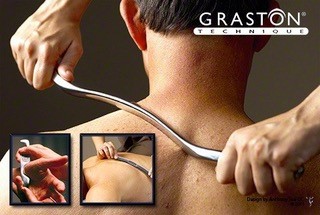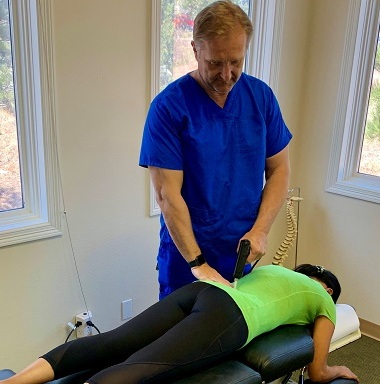950 W Baptist Rd #130
Monument, CO 80132
GRASTON TECHNIQUE
How to Improve Range of Motion with the Graston Techniques
The Graston Techniques is a form of instrument-assisted soft tissue mobilization that enables therapists to detect and break down scar tissue and fascial restrictions, as well as maintain range of motion.
Since the mid-1990s, the Graston Techniques has been the leading modality in Instrument-Assisted Soft Tissue Mobilization (IASTM). The Graston Techniques is clinically proven to achieve faster and better outcomes for acute and chronic conditions such as Achilles Tendonitis, Carpal Tunnel, Adhesive Capsulitis, IT Band Syndrome, Lumbar Strain and Plantar Fasciitis.
 Soft tissue injuries can be debilitating and frustrating for patients trying to live a normal life. The Graston Techniques is successful in effectively treating all soft tissue conditions, whether they a chronic, acute or occur after surgery.
Soft tissue injuries can be debilitating and frustrating for patients trying to live a normal life. The Graston Techniques is successful in effectively treating all soft tissue conditions, whether they a chronic, acute or occur after surgery.
A unique technique and instruments enable therapists to address scar tissue and fascial restrictions during rehabilitation to help relieve pain and increase range of motion. The non-invasive technique uses specially designed stainless steel instruments to help the therapist treat areas showing soft tissue fibrosis or chronic inflammation.
Graston Techniques allows a therapist to get as deep into the tissue as possible while remaining sensitive to the patient’s pain tolerance level. As the instruments are moved over the affected area and come in contact with the adhesions, they help break up scar tissue and fascial restrictions. Over time, this process will reduce or eliminate adhesions, restoring range of motion and eliminating the associated pain. It will help transform soft tissue injury into healthy functioning tissue.
Clinical Applications
The Graston Techniques is clinically proven to achieve faster and better outcomes in treating the following:
- Achilles Tendinosis/itis
- Carpal Tunnel Syndrome
- Cervical Sprain/Strain (Neck Pain)
- Fibromyalgia
- Lateral Epicondylosis/itis (Tennis Elbow)
- Lumbar Sprain/Strain (Back Pain)
- Medial Epicondylosis/itis (Golfer’s Elbow)
- Patellofemoral Disorders (Knee Pain)
- Plantar Fasciitis (Foot Pain)
- Rotator Cuff Tendinosis/itis (Shoulder Pain)
- Scar Tissue
- Shin Splints
- Trigger Finger
- Women’s Health (Post-Mastectomy and Caesarean Scarring)
Advantages of the Graston Techniques include:
- Decreased overall time of treatment
- Faster rehabilitation/recovery
- Reduced need for anti-inflammatory medication
- Resolution of chronic conditions thought to be permanent.
Treating a soft-tissue injury can cause pain. However, the use of Graston Techniques instrument allows the therapist to control the level of pressure applied. Soreness and bruising can occur during treatment.
Patients usually receive two treatments per week during a four- to five-week period. Most patients have a positive response by the third to fourth treatment.

